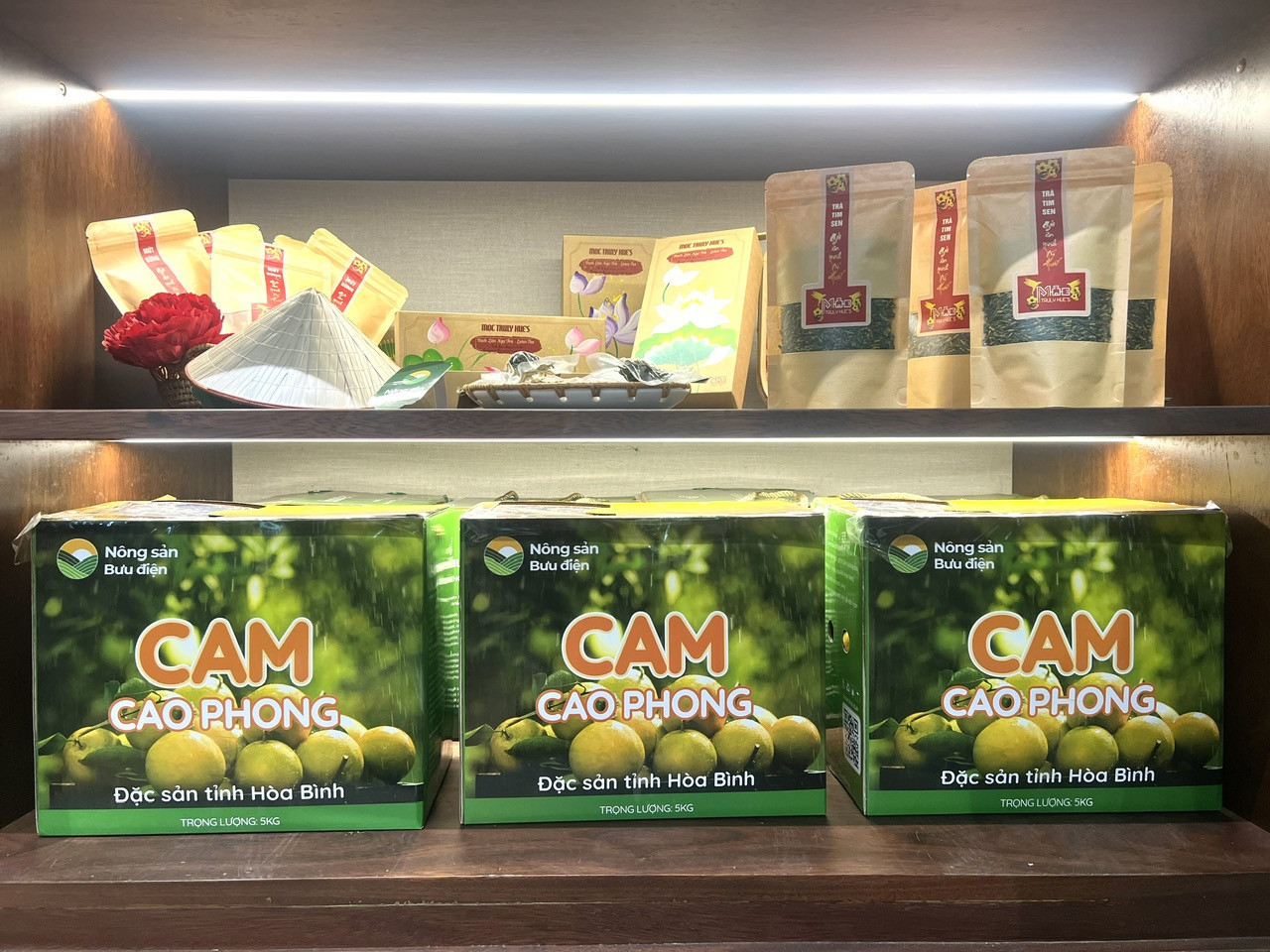
Policies in place, yet modest results
Cao Phong oranges, a renowned agricultural brand from Hoa Binh Province, are cultivated using safe, clean farming practices that meet VietGAP and GlobalGAP standards, making them suitable for export to demanding markets.
However, according to Dinh Cong Su, Vice Chairman of Hoa Binh People’s Committee, Cao Phong oranges, like many Vietnamese agricultural products, face challenges in expanding both domestic and international markets.
They struggle to compete with foreign goods and lack a sustainable brand image in consumers’ minds.
In July 2021, recognizing the potential of e-commerce to enhance the global presence of Vietnamese agriculture, the Ministry of Information and Communications issued Decision No. 1034 to promote digital transformation in rural agriculture.
Two domestic e-commerce platforms, Postmart (run by Vietnam Post) and Voso (operated by Viettel Post), were tasked with facilitating the sale of Vietnamese agricultural products online.
In June 2021, over three tons of lychees were successfully delivered to overseas Vietnamese in Europe via the Voso platform, marking a significant milestone in exporting fresh, high-quality agricultural goods through Vietnamese e-commerce systems.
As of now, more than 5.5 million accounts from farmers, cooperatives, and businesses have registered on Postmart, listing 150,000 products. Tens of thousands of tons of agricultural goods have been sold domestically and internationally, even during the COVID-19 pandemic.
Despite these efforts, the overall contribution of Vietnamese e-commerce platforms to agricultural exports remains limited. Platforms like Voso, once specializing in regional specialties, have ceased operations.
Leveraging external partnerships
Tran Minh Tuan, Head of the Digital Economy and Digital Society Department at the Ministry of Information and Communications, emphasized the unique challenges of agricultural products, which have a short window of peak freshness.
He suggested learning from international practices, such as China's integration of online and offline systems to bring agricultural goods closer to consumers.
China, Vietnam’s largest importer of agricultural products, offers a potential model. By integrating Vietnamese e-commerce platforms with major Chinese agricultural platforms, farmers and businesses could connect directly with Chinese consumers, reducing reliance on intermediaries and minimizing risks such as price suppression.
Recent initiatives include setting up bonded warehouses in Lang Son, Binh Duong, and Da Nang, enabling Vietnamese farmers and businesses to process customs clearance for agricultural shipments with Chinese authorities at these local facilities.
This approach minimizes losses from rejected shipments and reduces logistical costs.
Tuan also proposed collaborating with Chinese import-export enterprises to establish storage and export hubs that meet Chinese standards, making Vietnamese agricultural goods more accessible and competitive.
While revenue-sharing with foreign partners would be necessary, such partnerships could provide valuable lessons in technology and operations, paving the way for Vietnamese goods to penetrate other global markets like Europe and the United States.
Telling stories through online sales
Tuan also encouraged Vietnamese agricultural e-commerce platforms to capitalize on broadband internet infrastructure by utilizing livestreaming to promote products.
"Livestreaming not only sells products but also showcases local culture, boosts tourism, and creates jobs for local residents," he noted.
Vietnam Post has recently launched the Nong San Buu Dien platform (nongsan.buudien.vn) and partnered with TikTok Vietnam to amplify these efforts.
The collaboration aims to share millions of stories about Vietnamese agricultural products globally. With over 8,000 post office locations and 10,000 employees nationwide, Vietnam Post’s initiative aims to integrate storytelling into e-commerce.
In the first quarter of 2025, a campaign will train post office employees to create videos showcasing their local communities and products. The goal is to train 2,000 ambassadors by the end of 2025 to promote Vietnamese culture and agriculture to a global audience.
By merging innovative digital strategies with cultural storytelling, Vietnam can enhance the value and reach of its agricultural products, attracting global consumers while enriching local communities.
Binh Minh